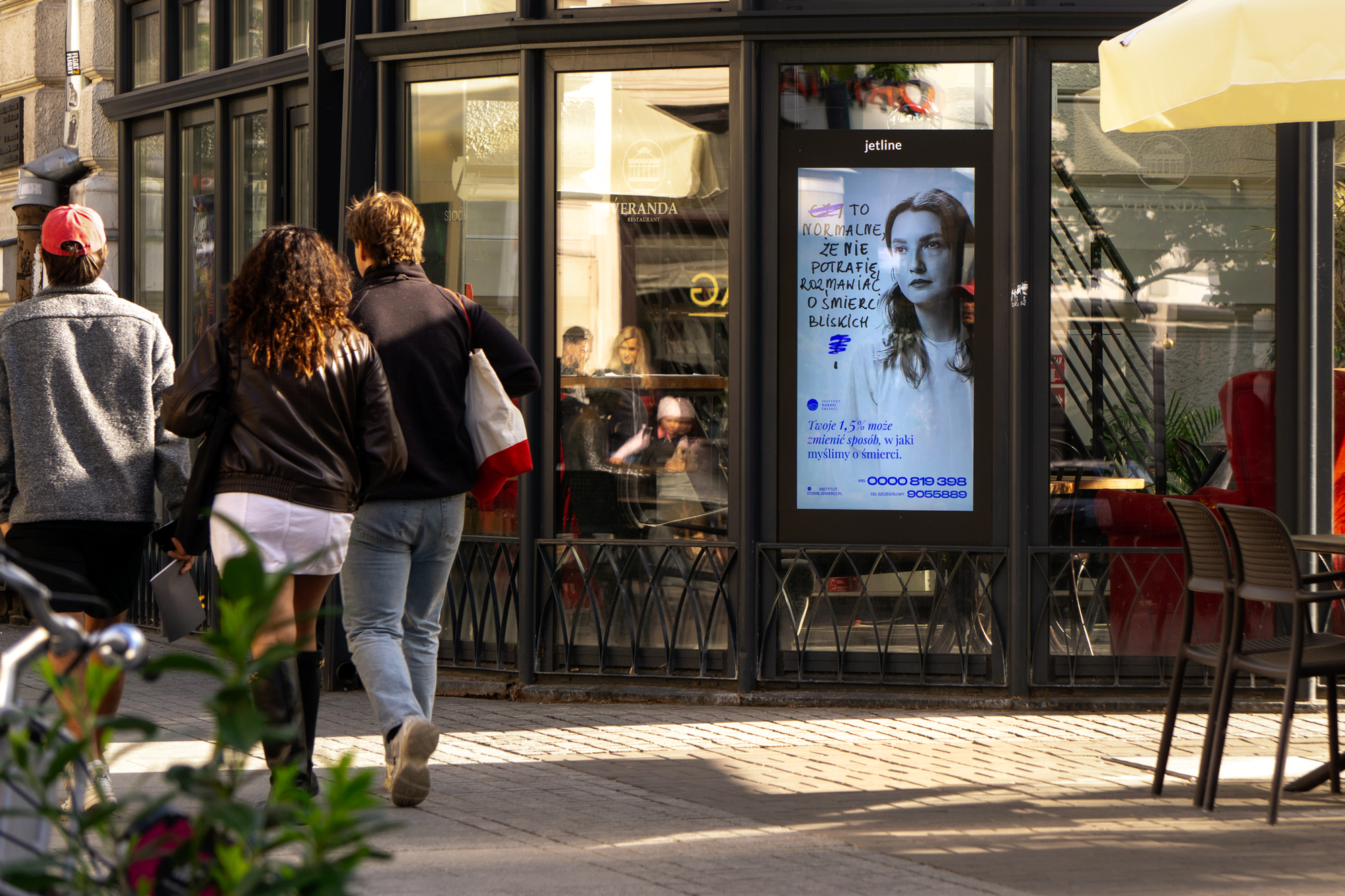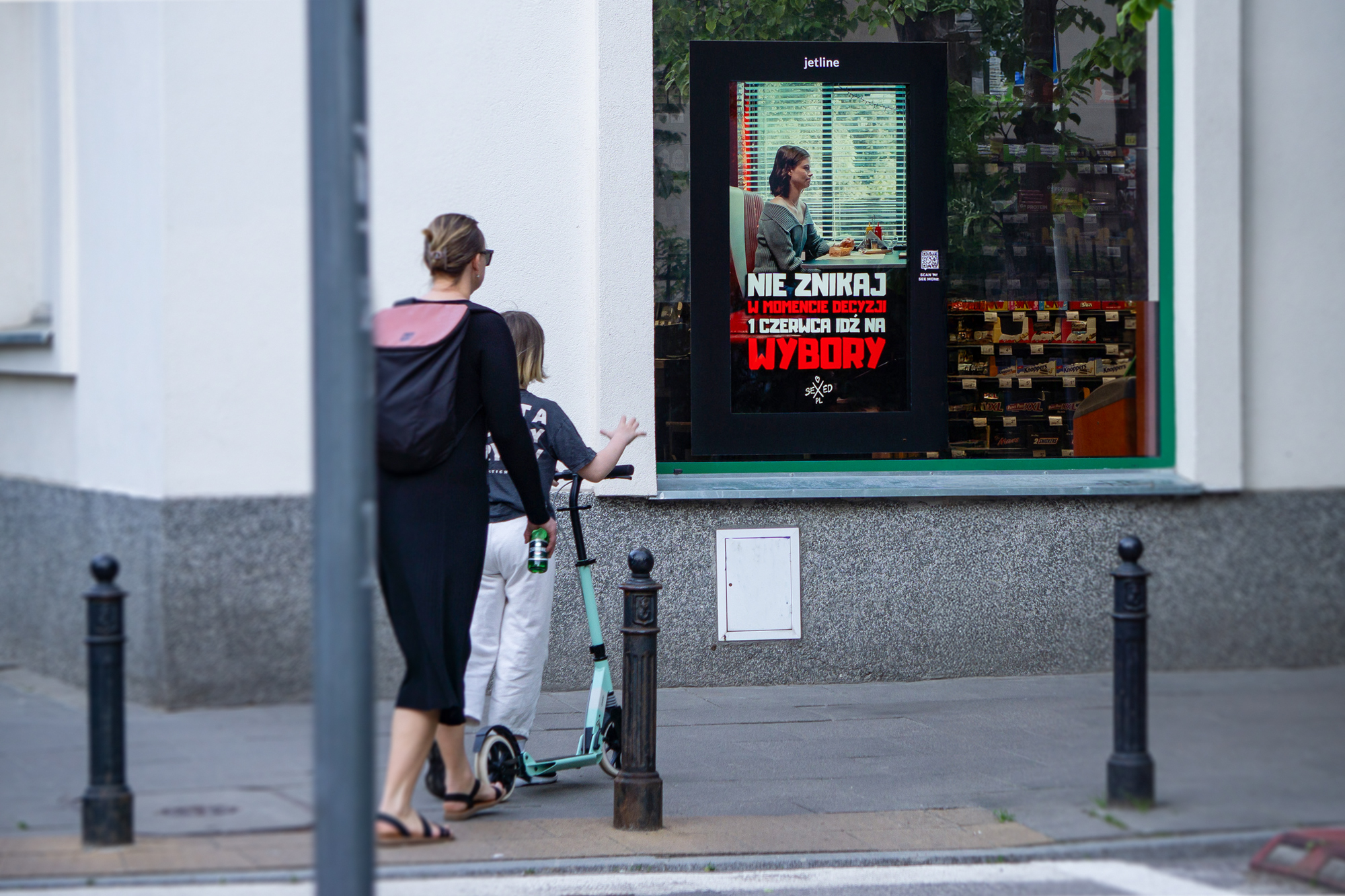Jet Line, NGOs, Culture and other Good Things Happening out of Home
I'm writing this article in the first days of July 2025. It will be a brief summary of the first half of our partnership collaborations, something like our code of conduct and a collection of best practices, and who knows, maybe also an inspiration for someone. In any case, that's the intention guiding me.
Micro-summary
In the first half of 2025, we partnered with 45 organizations and institutions (foundations, associations, cultural institutions, aid organizations) running their promotional campaigns on our MORE, Motorway and MobiJet media.
In the vast majority, we broadcast them on MORE digital screens, which reach over a million people daily
(how do we know this? read here)
We broadcast a total of 90 different spots that were displayed in the 8 largest cities in Poland.
1 campaign was on MobiJet.
2 campaigns were on Motorway 12x4 m.
The shortest campaign lasted 1 day.
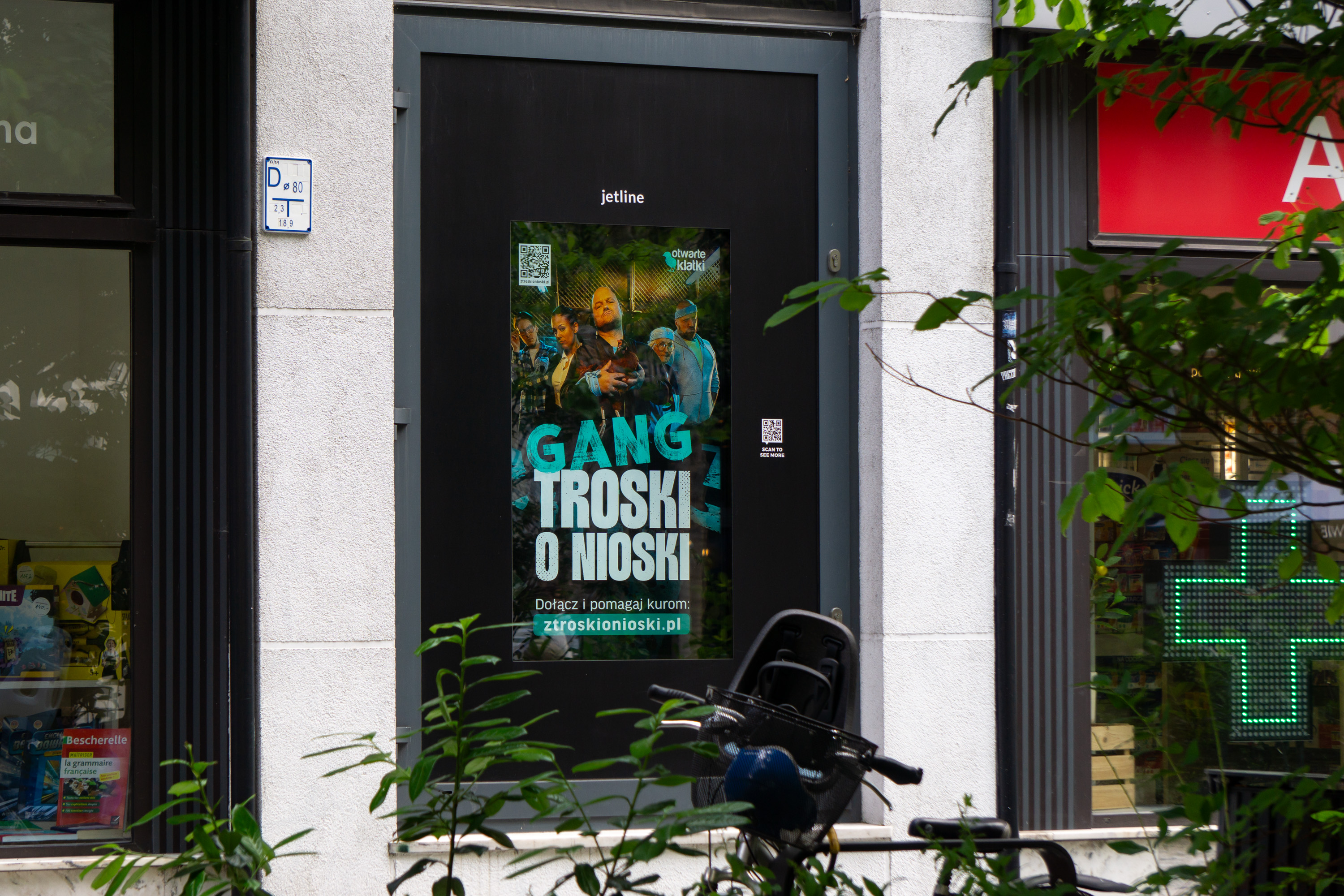
Why are We Doing this?
We help because we can and want to.
We run a foundation ourselves, we know what it means to work for others, with a mission.
Besides, we know the power of outdoor advertising. We know what strength it has and that it works.
What Exactly Do We Do?
We share our resources: media space on MORE and MyLED Warsaw screens as well as Motorway, graphic consultation if needed, we take photographs of campaigns for the organization's own needs and prepare implementation reports if there's a special need.
So basically we operate identically to commercial campaigns.
The same media, the same locations, the same knowledge, support. Just a slightly different goal, though it's always about getting attention.
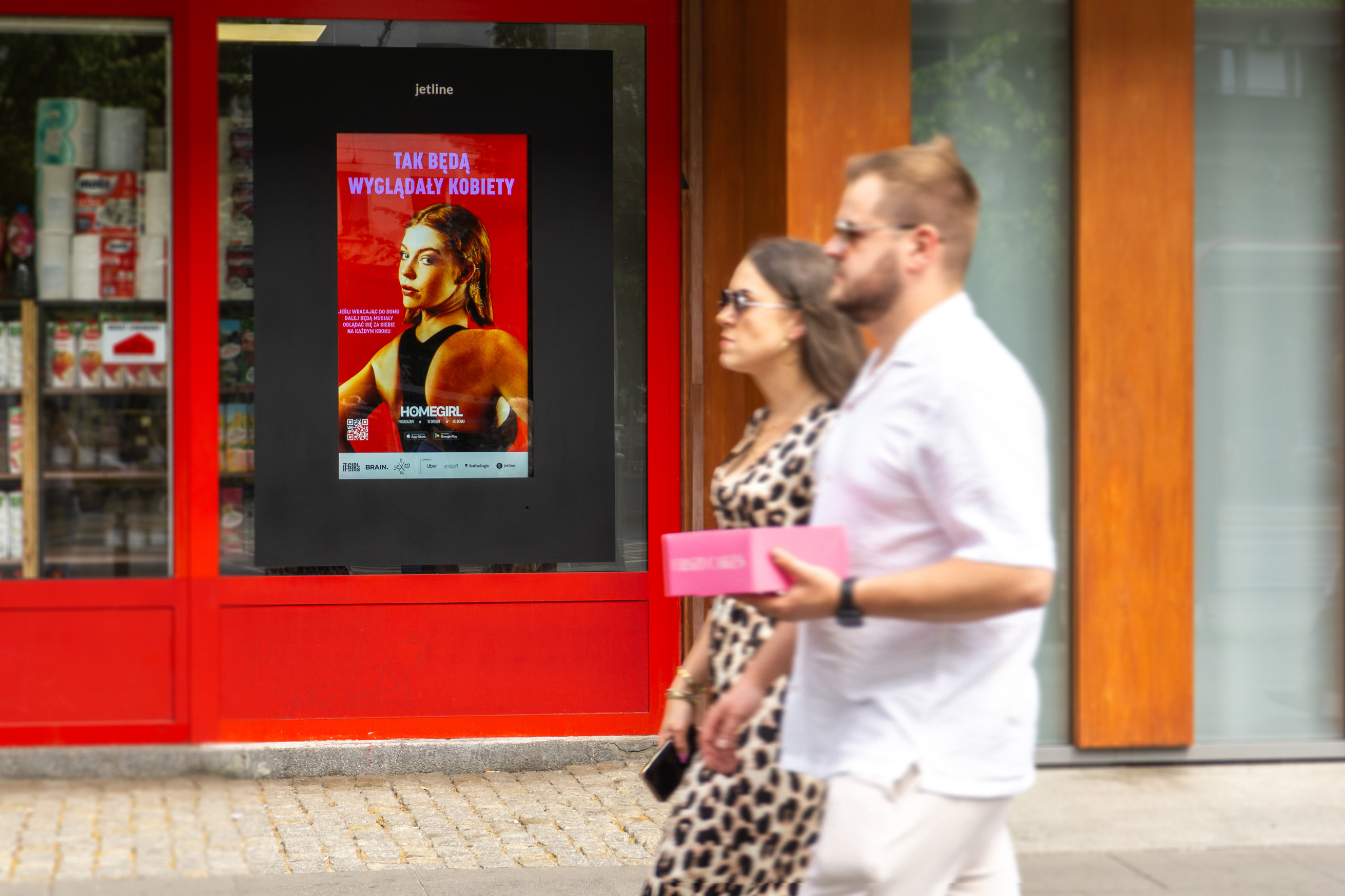
How Do We Choose Partners?
I believe that partners choose us. When I ask how they found us, they most often say: we saw your screens around the city. I believe this because that's exactly how outdoor advertising works: you see it around the city.
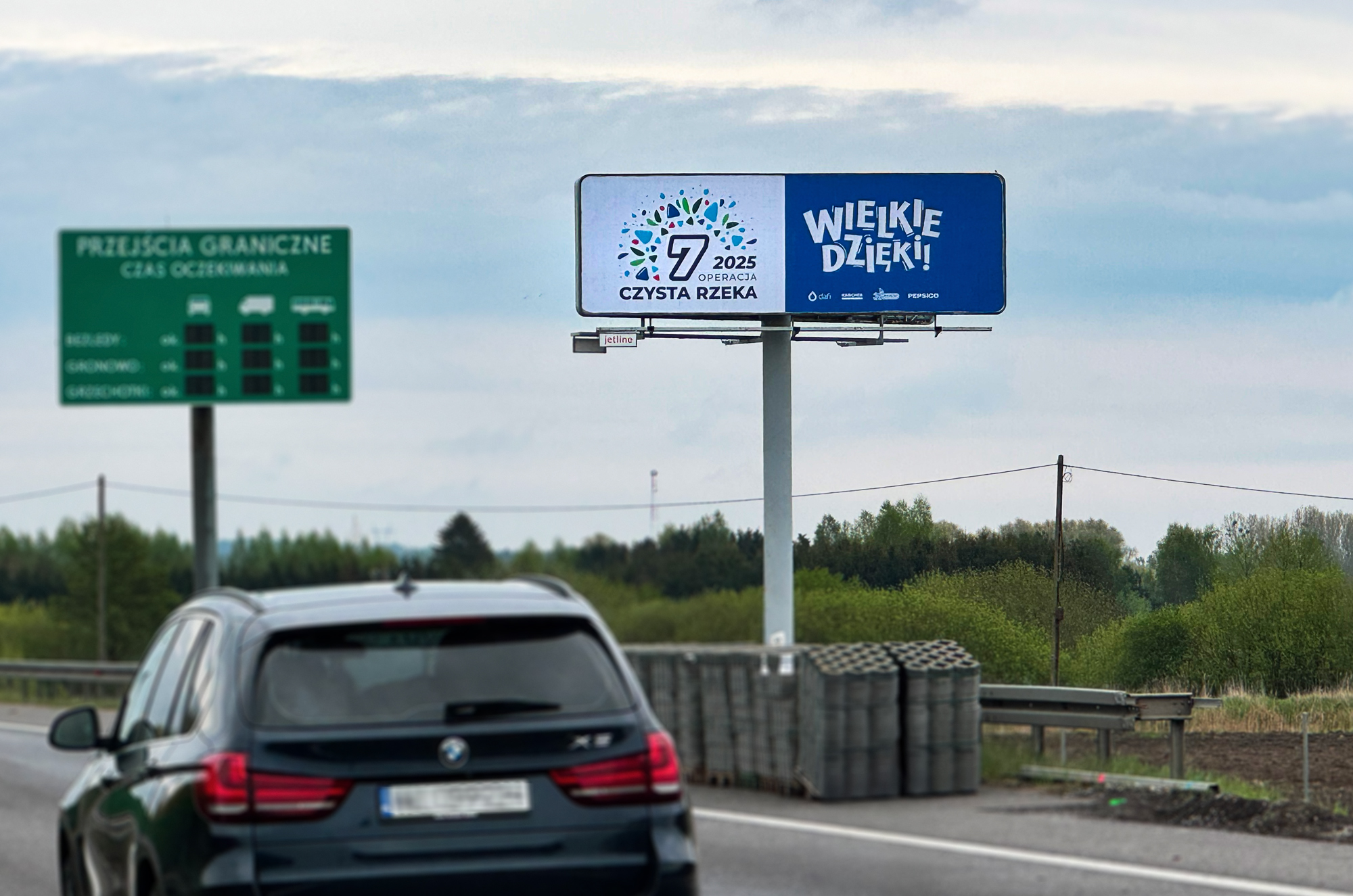
How do we work?
We can't help everyone, so we have to choose somehow. I admit this is the most difficult part and it's possible that someone doesn't like our subjective choices (why do we choose these and not other organizations? is it fair?).
Last year I wrote an email to people from several dozen friendly NGOs and asked them to honestly share their experiences. What's important in such collaborations? Do they have a budget? How do they manage it? Do they work directly or via a media house?
From these valuable responses, our code of conduct was born - our internal "Framework principles for Jet Line's provision of media space to organizations, institutions, foundations for promotional campaigns, including 1.5%".
Here's what seems important to us for both sides and adequately relevant business-wise:
- We want to be mutual partners. Possibly long-term ones.
- We always learn about the organization's statutory goals, people, mission, tasks, situation, stability, cooperation history, etc.
- There are different organizations, with budgets and without budgets. We consider each request individually.
- Each time we calculate and present the partner with the value (price) of the campaign within the collaboration. This includes the value of advertising space and any additional services: poster printing, installations, designs, etc.
- One of the selection criteria is the target groups that organizations communicate with and that we want to reach, i.e., organizations that, having a positive impact on selected communities, are our image and business investment.
- We mutually establish communication principles and possibilities. We accept that we can use campaign materials to promote our company and our media or solutions.
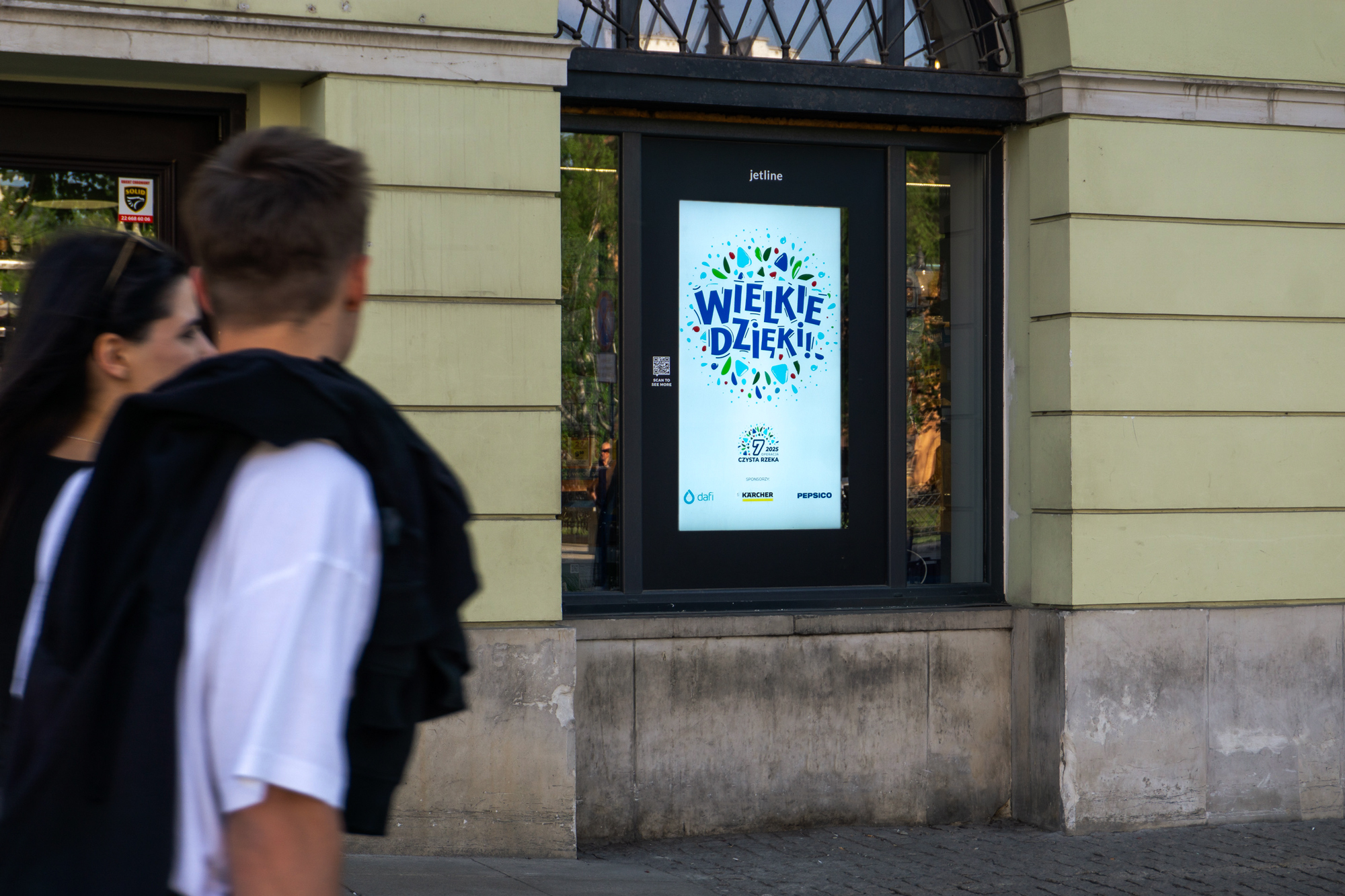
What's the most Difficult Thing about Collaborations?
Speaking tongue-in-cheek: correctly tagging Jet Line's profile on social media. It turns out that the simple and obvious spelling of "Jet Line" tempts various variations. Meanwhile, it's written like a first and last name: two words, two capital letters. Jet Line.
But speaking seriously: the decision about collaboration is always the most difficult, especially when we really want to help but don't have the space for it (time, place, circumstances). I also mean justifying the decision to refuse collaboration.
Is any Campaign or Collaboration Exceptional?
Every campaign and every collaboration is exceptional. I know you'll think I couldn't answer differently and that will be true: I couldn't answer differently because each one is exceptional. We discuss every invitation and when deciding on collaboration, we know well why. Roughly speaking, because they align with us.
But also most often because they have something in common with being out of home: the #HomeGirl app helps women feel more confident outside the home, kids playing soccer play it on a field under the open sky, the Museum of Asia and the Pacific inspires travel to distant countries, which become closer here, in Warsaw, in Powiśle.
But also because they help others with knowledge and experience. They talk about prevention, encourage testing, break taboos. Once Małgosia Lakowska from #KochaszDopilnuj called me with information that during the #Badajajka campaign, some man called them saying he went to get tested and the doctor detected cancer and he wants to thank them very much because everything ended well. This moves me.
And books. Because books are always good, everywhere and for everything. #BigBookFestiwal 💙
Although... yes, there is such an exceptional campaign and it's a spot for our Rejs Odkrywców Foundation, which I'll allow myself to write about separately.
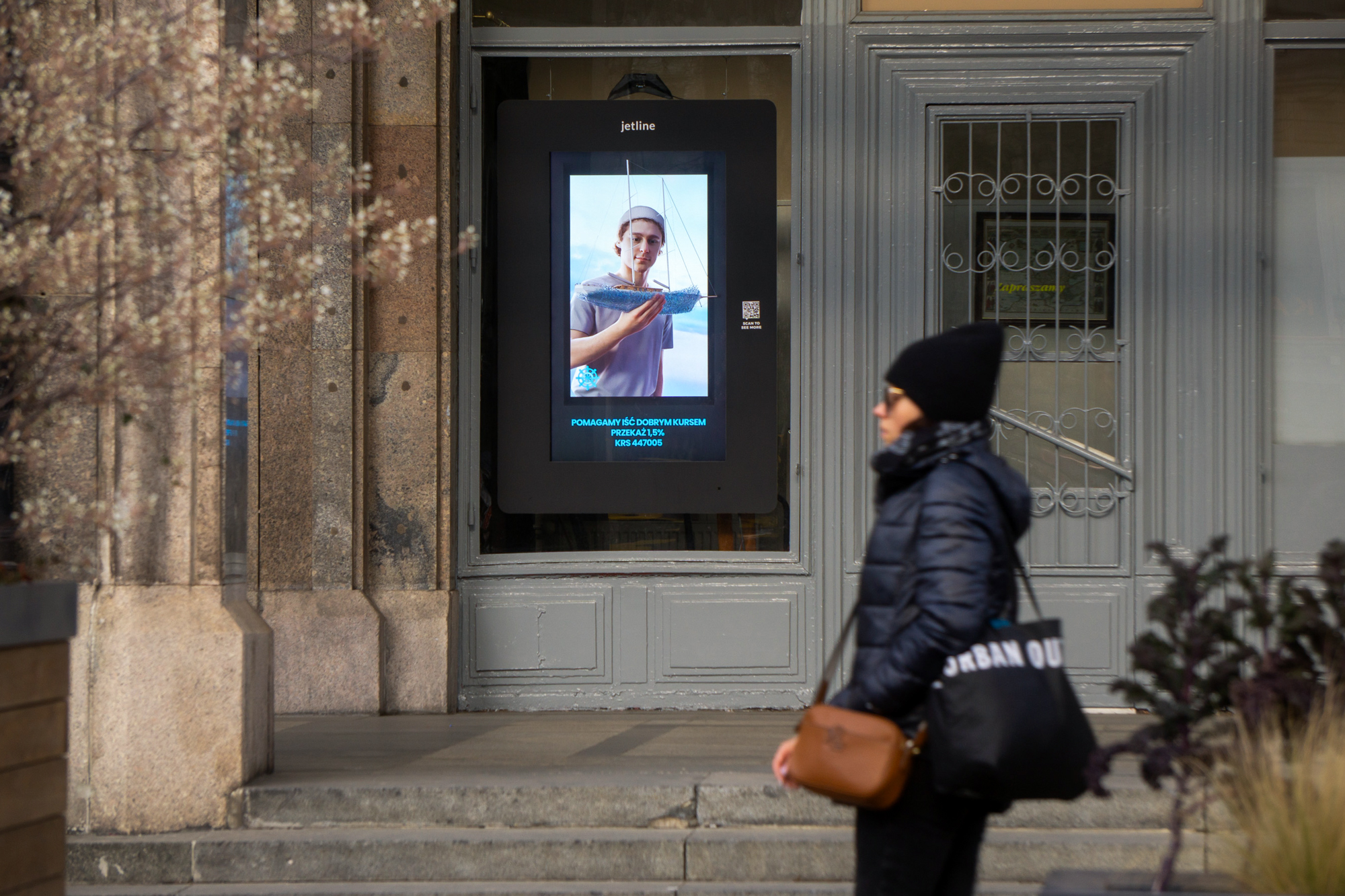
Last but not Least
Dear, beloved, respected Partners!
You do beautiful things and I'm very happy that we can accompany you in this.

